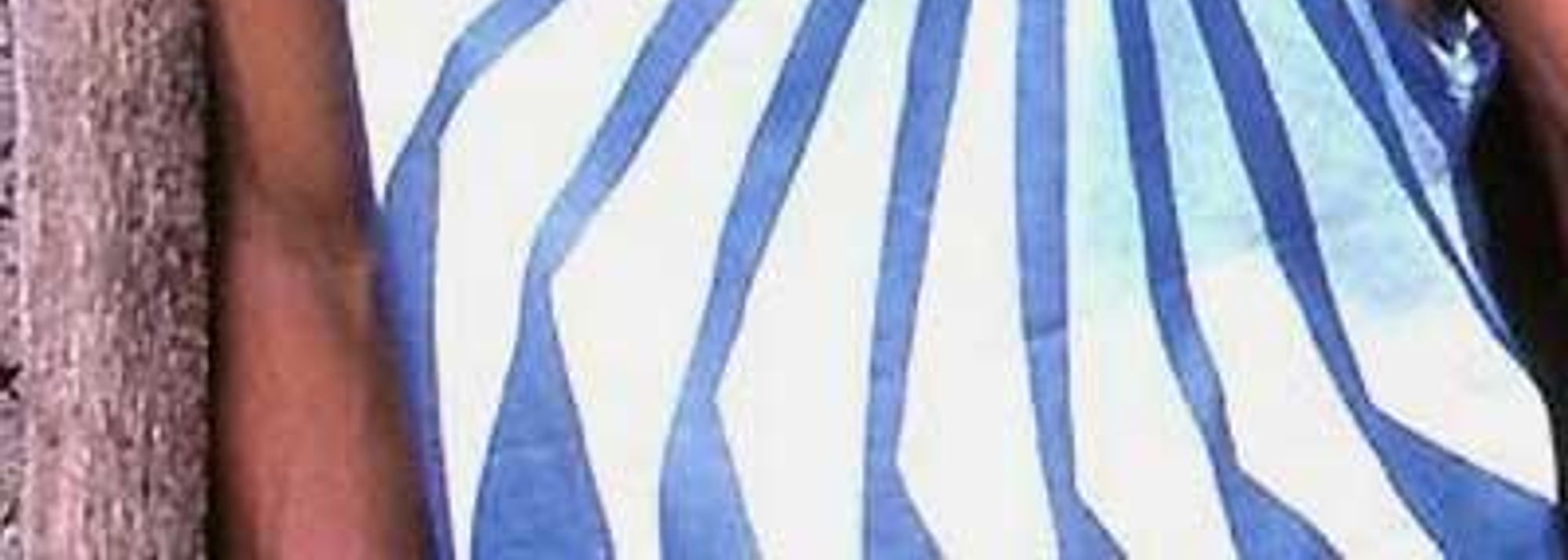Pamenos Ballantyne the winner of the hurricane delayed 2004 OECS Half Marathon in Grenada (© Finisterre)
There was an air of business as usual about the 2004 Organisation of Eastern Caribbean States (OECS) Half Marathon, sponsored by regional insurance firm NEMWIL, which took place on Sunday (12 Dec) on the Caribbean island of Grenada which was ravaged by a hurricane in September. But like an old friend with a slight cosmetic change, you could tell something was different.
A heated battle
The Commonwealth of Dominica, the host nation of Grenada, St Lucia, St Vincent & the Grenadines and Trinidad & Tobago were well represented amongst the 123 athletes facing the starter’s pistol. Familiar rivals Pamenos Ballantyne, Victor Ledgers and Curtis Cox were all there, treating spectators to a heated battle for the men’s title.
Ballantyne, the 31-year-old Vincentian, pulled out early and forced the pace on Ledgers and Cox. Ledgers and Ballantyne had won marathons in Barbados and Jamaica seven days earlier, but they looked fresh on Sunday in St George’s. Ledgers, 37, appeared best poised to challenge Ballantyne, but as the race wore on, there was only one man in it.
There was nothing unusual in the sight of Ballantyne crossing the line first, in 1:12:40, nor in his St Lucian rival, Ledgers, being the bridesmaid. Ledgers’ time of 1:15:50 earned him second place ahead of three Trinidadians: Denzil Ramirez, Cox and Errol Williams.
Nor was there anything abnormal in the continued dominance of the doyenne of Eastern Caribbean road running, Adelaide Carrington. Another Vincentian, the 30-year-old Carrington enjoyed a breezy run of 1:41:30 to beat out 15-year-old Trinidadian Tonya Nero (1:45:50), with Fidela Ramirez a further 10 minutes back.
Helping an Island get back on its feet
But the NEMWIL OECS Half Marathon was not as it always had been. The event was first scheduled for October, but that changed when Hurricane Ivan struck the Eastern Caribbean in early September. Grenada lost 90% of its housing stock and dozens of lives in the worst storm to hit the region in a decade.
“What would normally happen would be that some other island would have taken over and hosted it,” says Charlie George, president of the Grenada Athletics Association. “But we encouraged our OECS counterparts to give us some time and we decided we would host it in December.”
One of the chief backers was Keith Joseph, President of the St Vincent & the Grenadines Amateur Athletics Association and Vice-President of the North American, Central American and Caribbean Athletic Association, NACAC. Within days of Ivan, Joseph had issued a statement that Grenada “should be given every possible opportunity” to host the race.
All is not lost
Taking advantage of that opportunity required substantial support from the OECS Sports Desk, the National Amateur Athletics Association (NAAA) of Trinidad & Tobago and sponsors NEMWIL. Ivan hit Grenada’s manufacturing sector hard, so flyers, posters, banners, t-shirts and trophies had to be sourced from Trinidad & Tobago.
“There was [also] the question of roads to be cleared, repairs to be made, trees to be moved from roads and so on,” adds George. “The Organising Committee and officials did a marvellous job. We had about 49 marshals, about 45 people manning water stations and people were more than willing. Even though they were suffering and needed time themselves to repair homes and so on, they were more than willing to come out.”
The race turned out to be a coping mechanism for Grenada’s athletic fraternity. OECS Sports Coordinator David Peterkin called it “a great effort, a great event.” George pointed out that “one of the things this event did was to tell us that all was not really lost.
Great for us as a people
“We were supposed to host the CARIFTA Games; we can’t, because the Stadium is in shambles. But we showed our organisational skills and capabilities today, and the fact that we were able to host this and the fact that we were able to prepare our Grenadian athletes to compete is great for us as an organisation and great for us as a people in general.”
Looking around Grenada, there are clear signs of recovery. Tarpaulins, omnipresent in the immediate aftermath of the storm, are giving way to galvanized iron roofs. It’s still the rainy season, so some citizens are making temporary adjustments. But after the destruction visited by Ivan, the rain has had a positive effect as well.
“I looked at Grenada since I’ve been here and I see green,” says OECS Sports Coordinator David Peterkin. “Nature’s a wonderful thing. Right after Ivan all the hills, everything was brown, now with nature and the rain you see so much green and so much rich green. And people are stating to pick themselves up, you know.”
Good neighbours
The recovery will continue with help from Grenada’s neighbours. At the conclusion of the Half Marathon, NACAC presented a US$10 thousand grant to the Grenada federation. That amount will go towards replacing office materials – computers, fax machines etc. – that were destroyed by Ivan.
Meanwhile, Trinidad & Tobago’s NAAA, which was eventually awarded the 2005 CARIFTA Games, formally confirmed its intention to help Grenada’s participation in that meet. NAAA president Kenneth Doldron was in St George’s. He pledged his federation’s willingness to sponsor travel and accommodation for 20 athletes and 5 officials from Grenada.
Like the vast majority of Grenada’s citizens, the athletics fraternity in the Spice Isle was profoundly affected by the events of early September. From all indications, strength of character and a lot of help from friends and neighbours will affect the nation just as profoundly. It may not be business as usual for some time to come, but Grenada seems to be well on the road to recovery.



